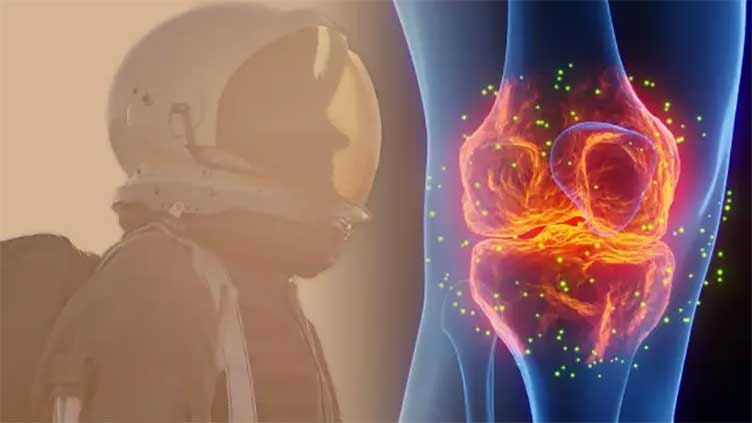One-minute exercise inspired by astronauts boosts life expectancy, protects knees

Jump-based exercise like skipping could help prevent type of cartilage damage
(Web Desk) - A simple workout could be used to protect astronauts knees during lengthy space missions - and also yours at home, according to a new study.
Astronauts will have rigorous exercise routines during extended missions to the Moon and Mars.
Astronauts already spend two hours a day exercising aboard the International Space Station (ISS), where they are stationed for around six months at a time.
Weights, treadmills, and cycling are all staple exercises for astronauts.
But researchers at John Hopkins University reckon the most effective workout for space-bound humans, may actually be jumping.
Jumping workouts like skipping could help astronauts prevent the type of cartilage damage they are likely to endure during long missions to the Moon and Mars.
In studying mice, researchers found that knee cartilage in their four-legged subjects grew healthier after jumping exercises.
“Since the next step in human exploration of space is going to Mars and spending long periods of time in permanent bases on the Moon, cartilage damage is a really major issue that space agencies need to address despite how very poorly understood it is,” said study author and astrophysicist, Marco Chiaberge.
He added: “The positive effect we saw in these mice is huge, and the magnitude of it was unexpected.
"They can basically make their cartilage thicker if they jump.
"Maybe astronauts could use similar training before their flight as a preventive measure.”
Healthy cartilage is essential for pain-free movement, which can boost your life expectancy.
Without it, astronauts would be unable to perform crucial tasks while building permanent habitation bases on other worlds.
Yet cartilage regenerates slower than other tissue.
So, prolonged periods of inactivity - be it from space travel or bed rest - can be tough on the joints.
“Think about sending somebody on a trip to Mars, they get there and they can't walk because they developed osteoarthritis of the knees or the hips and their joints don't function,” Chiaberge said.
“Astronauts also perform spacewalks often. They serviced the Hubble Space Telescope five times, and in the future, they will need to spend more time in space and the Moon, where we will build larger telescopes to explore the universe and where they will need to stay as healthy as possible.”
Previous research pointed to treadmill running to slow cartilage breakdown in rodents.
But new research suggests that jump-based exercise can prevent cartilage loss and increase it.
Mice that performed jump training three times a week had thicker, healthier cartilage - which means extra cushion for the joints and less bone friction.
“Leg strength is particularly important and most highly impacted by microgravity," said Mark Shelhamer, a former Nasa Human Research Program Chief Scientist and fellow author of the study.


